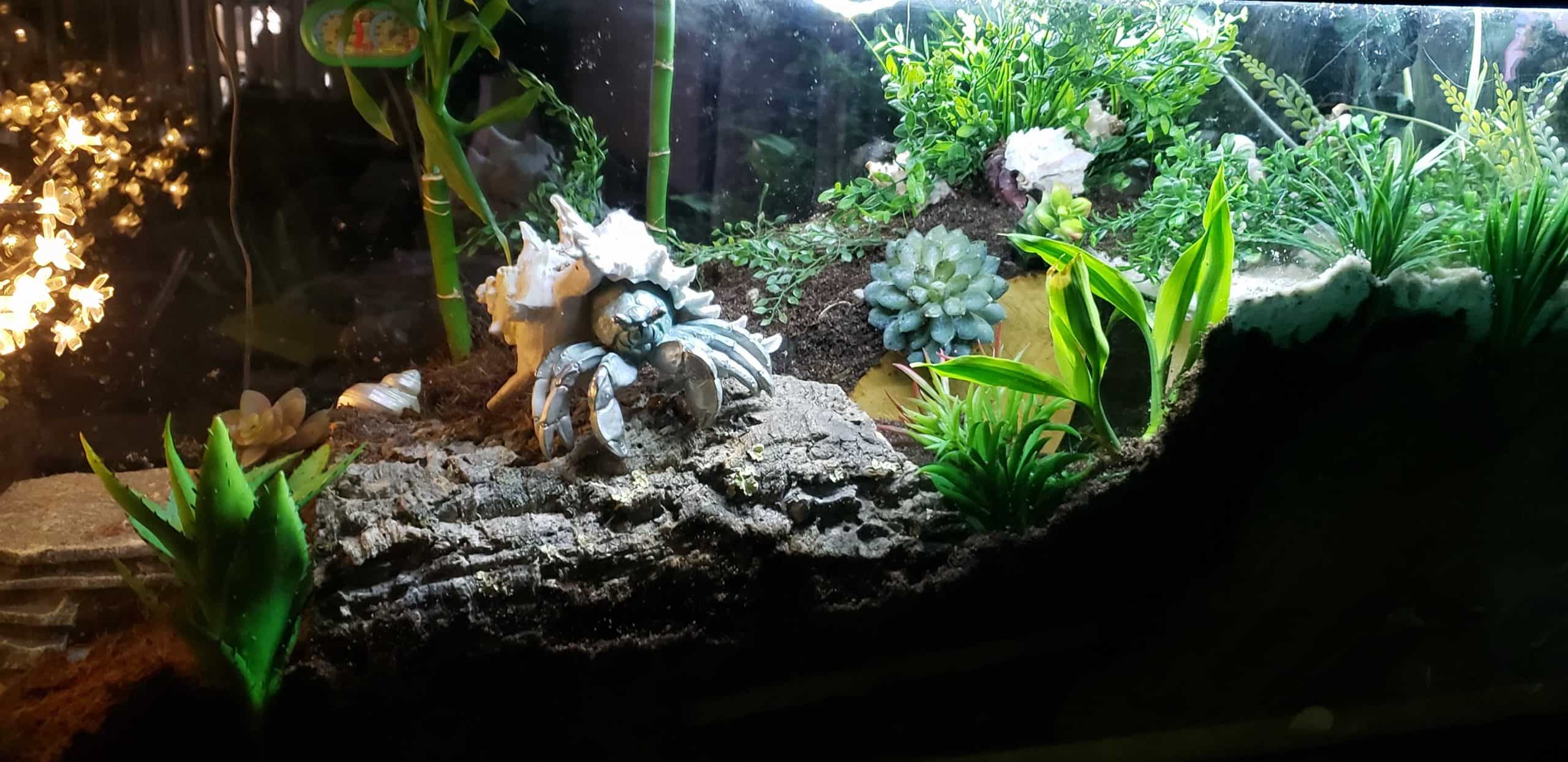My crabitat is a unique and fascinating environment designed to provide a comfortable and stimulating home for my pet hermit crabs. Crabitats can vary in size and complexity depending on the number of crabs you have and your personal preferences. Here are some key elements that make a crabitat an ideal habitat for your little crustacean friends.
First and foremost, a crabitat should include a spacious enclosure that mimics the natural habitat of hermit crabs. This typically involves a glass or plastic tank with secure lids to prevent escapes. It’s important to provide enough space for your crabs to roam and explore, as they are naturally curious creatures. Consider the size and number of your crabs when choosing the appropriate tank size.
To create a comfortable living environment, the substrate is crucial. A mixture of sand and coconut fiber, often referred to as “eco-earth,” provides a soft and moist substrate that mimics the sandy beaches where hermit crabs are found in the wild. This substrate should be deep enough for your crabs to burrow and molt, as molting is a vital process in their growth and development.
Crabitats should also incorporate various elements to keep your crabs entertained and stimulated. This includes providing climbing structures such as driftwood, branches, and rocks, which allow your crabs to exercise and explore different levels within the tank. Additionally, placing shells of different sizes and shapes in the tank is essential, as hermit crabs frequently change shells as they grow. This not only provides them with suitable homes but also adds visual interest to the crabitat.
Maintaining proper temperature and humidity levels is crucial for the well-being of your hermit crabs. A temperature range of 75-85°F (24-29°C) with a humidity level around 70-80% is ideal. This can be achieved through the use of heat mats, heat lamps, and misting the tank regularly. Monitoring these conditions using a thermometer and hygrometer is essential to ensure your crabs are comfortable and healthy.
Lastly, adding some natural décor and hiding spots, such as artificial plants, seashells, and tunnels, can create a visually appealing and enriching environment for your crabs. It’s important to avoid any decorations or substances that could be toxic to them, such as painted objects or chemically treated materials.
Remember, maintaining a clean and hygienic crabitat is vital. Regularly clean the tank, removing any uneaten food, waste, and dead plants to prevent unpleasant odors and bacterial growth.
By providing a suitable crabitat, you are creating a safe and stimulating environment where your hermit crabs can thrive and exhibit their natural behaviours.



